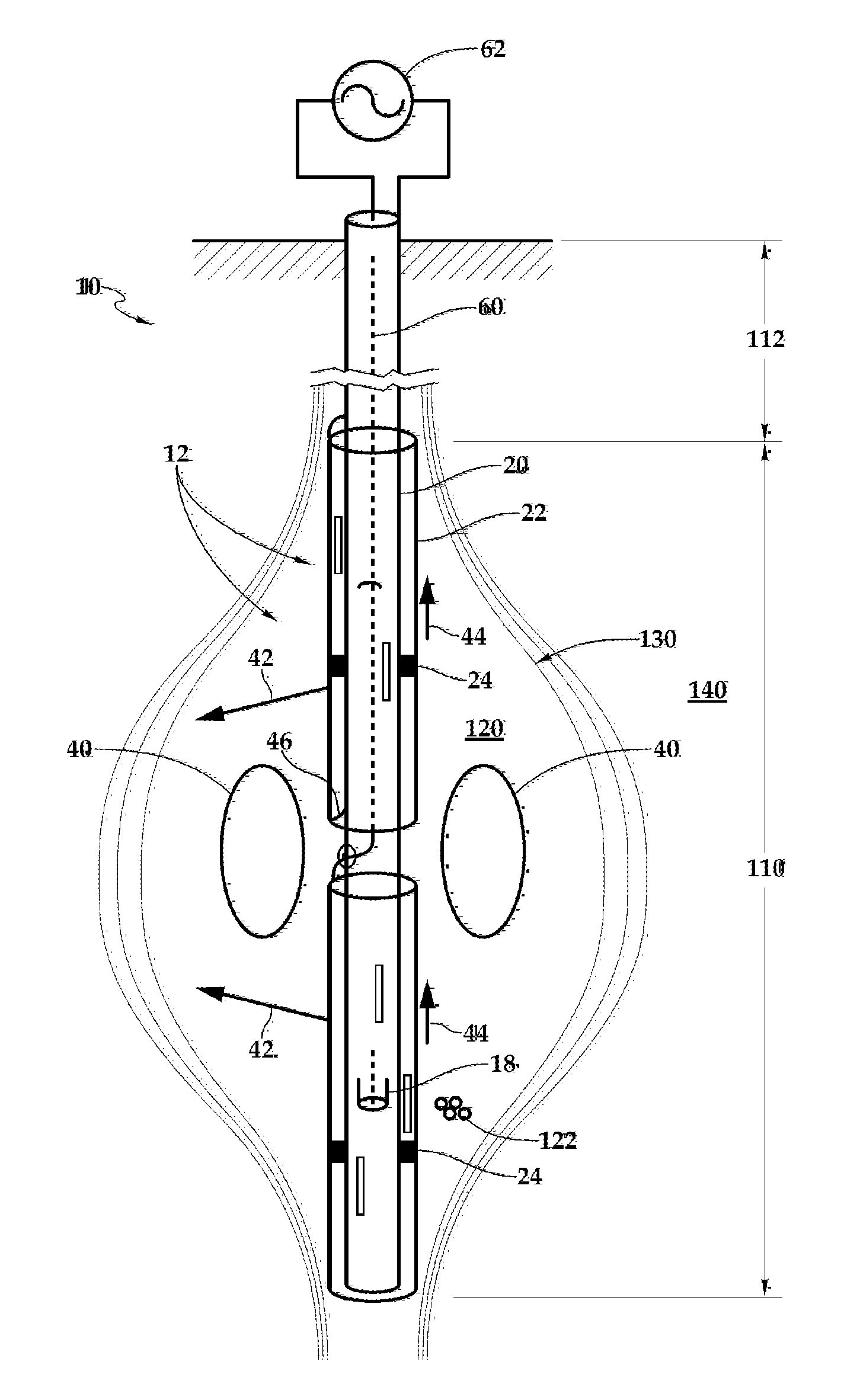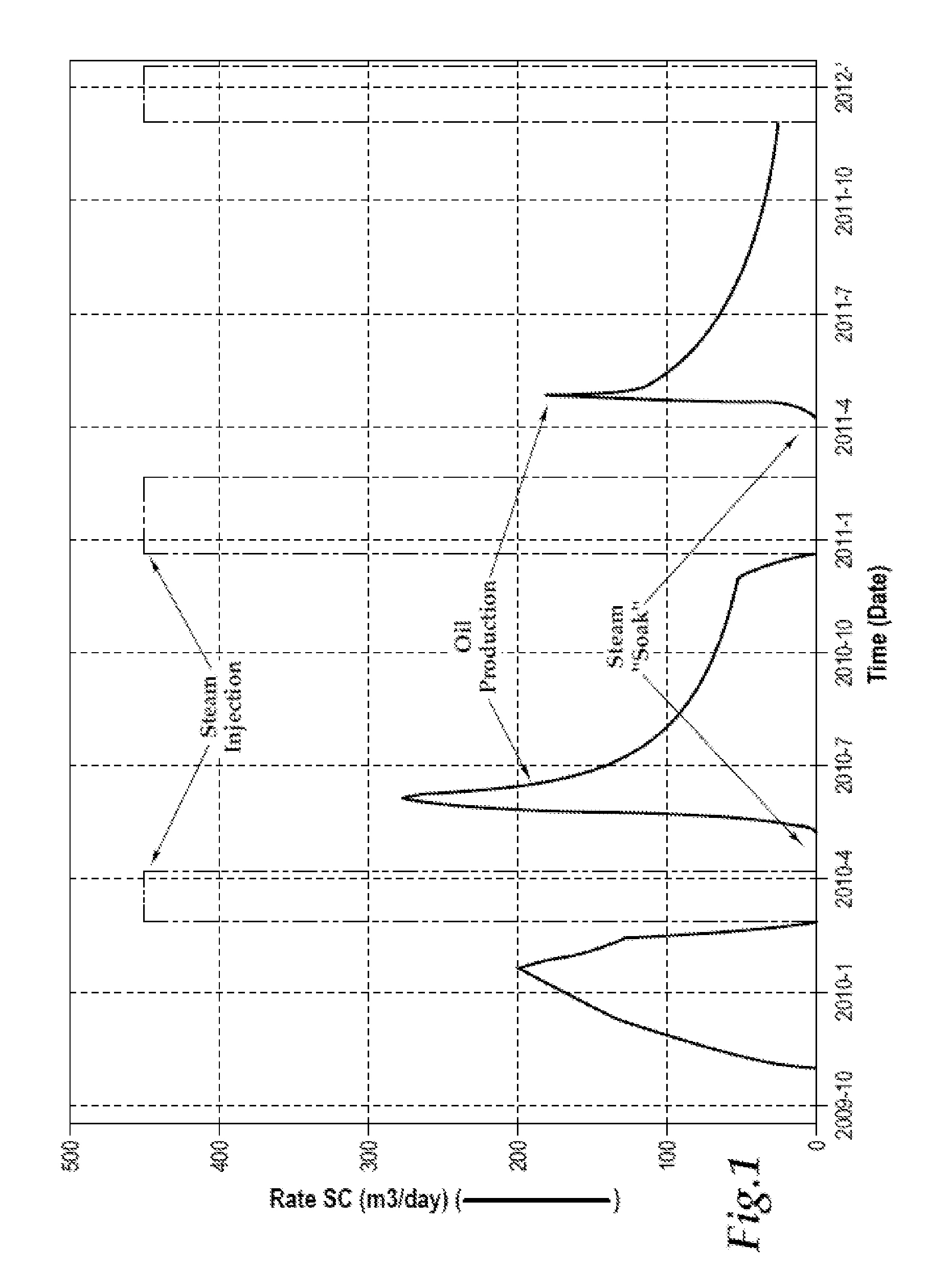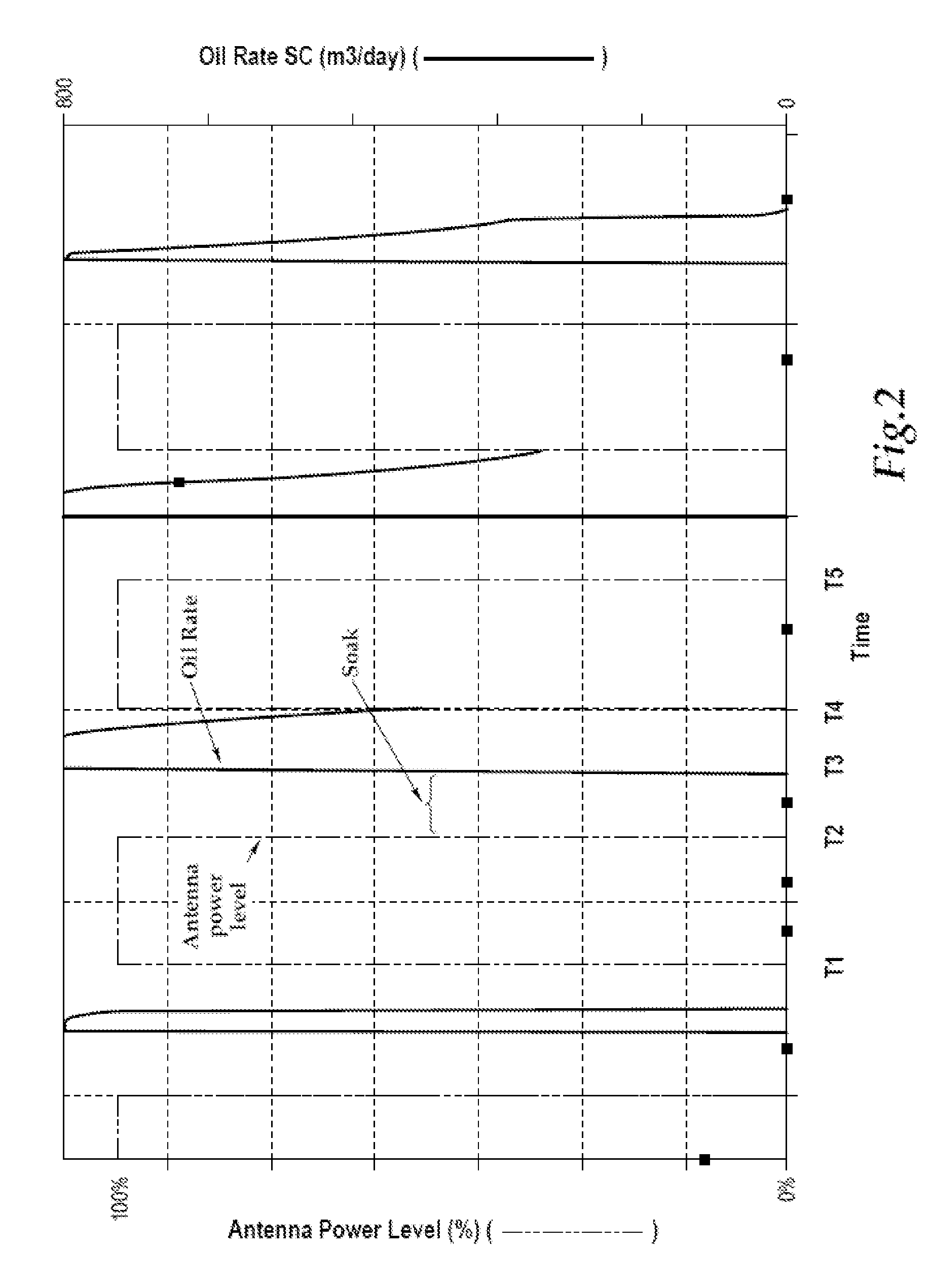Cyclic radio frequency stimulation
a radio frequency stimulation and cyclic technology, applied in the direction of fluid removal, earthwork drilling and mining, borehole/well accessories, etc., can solve the problems of difficult production, difficult to produce, and difficult to produce heavy oil and bitumen from hydrocarbon reservoirs, so as to reduce operating costs, reduce operating temperatures, and reduce electricity
- Summary
- Abstract
- Description
- Claims
- Application Information
AI Technical Summary
Benefits of technology
Problems solved by technology
Method used
Image
Examples
example 1
Cyclic RF Stimulation
[0051]FIG. 2 shows an embodiment of cyclic RF stimulation of the present invention. At time T1 the producer well is shut in and the RF power is cycled to a high level, for example 100%, for a period of time from T1 to T2, which should be sufficient to heat a region of hydrocarbon and increase the pressure of the reservoir. During this period, the RF energies may expand into the surrounding region through direct electromagnetic radiation, or by vaporization of the water and propagation of energies through the desiccated, low electrical conductivity region. Dry gas, steam or dielectric fluid may also be injected with the application of RF power.
[0052]At time T2, the RF power is cycled to a low level, for example 0%. Between time T2 and T3 the heat provided by the antenna or antennae is allowed to soak into the reservoir to heat and mobilize a larger region of the hydrocarbon resource. At the end of the soak period, indicated by T3, the producer well is opened and ...
PUM
 Login to View More
Login to View More Abstract
Description
Claims
Application Information
 Login to View More
Login to View More - R&D
- Intellectual Property
- Life Sciences
- Materials
- Tech Scout
- Unparalleled Data Quality
- Higher Quality Content
- 60% Fewer Hallucinations
Browse by: Latest US Patents, China's latest patents, Technical Efficacy Thesaurus, Application Domain, Technology Topic, Popular Technical Reports.
© 2025 PatSnap. All rights reserved.Legal|Privacy policy|Modern Slavery Act Transparency Statement|Sitemap|About US| Contact US: help@patsnap.com



